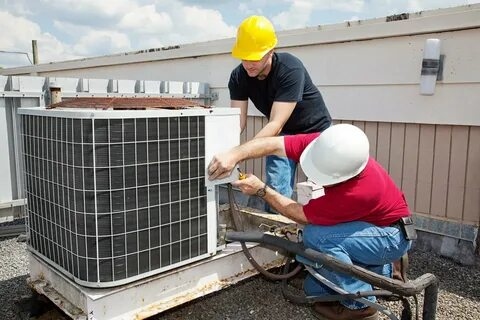CNC Lathe Machine: Precision Turning in the Digital Age
The manufacturing industry has undergone a revolution with the introduction of computer numerical control (CNC) technology. Among the most widely used CNC tools is the CNC lathe machine, a highly efficient, accurate, and versatile device that has transformed the way parts are machined and produced.
Whether you’re manufacturing engine components, surgical instruments, or aerospace parts, CNC lathes offer unmatched precision and repeatability. This article explores what a CNC lathe machine is, how it works, and why it’s a cornerstone of modern machining.
What Is a CNC Lathe Machine?
A CNC lathe machine is a computer-controlled version of a traditional lathe. In essence, it rotates a workpiece on a spindle while various cutting tools are applied to shape the material into the desired form. Unlike manual lathes, CNC lathes operate under the control of a pre-programmed computer code (usually G-code), ensuring high accuracy, consistency, and automation.
CNC lathes are primarily used for turning operations, which involve removing material from the outer surface of a cylindrical or round object. However, modern CNC lathes can also perform complex operations such as drilling, threading, knurling, grooving, taper turning, and more.
Key Components of a CNC Lathe Machine
- Bed – The base of the machine that supports all major components.
- Headstock – Contains the spindle and motor; responsible for rotating the workpiece.
- Tailstock – Provides support at the opposite end of the spindle, especially for long workpieces.
- Chuck – Holds and grips the workpiece firmly during rotation.
- Tool Turret – Houses multiple tools and indexes them automatically during machining.
- Control Panel (CNC Unit) – The brain of the machine; allows operators to input, edit, and run programs.
- Coolant System – Delivers coolant to the cutting area to reduce heat and prolong tool life.
How a CNC Lathe Works
- Programming: The machinist writes a G-code program that instructs the machine on how to perform each operation—tool paths, speeds, feeds, and positioning.
- Setup: The workpiece is clamped into the chuck, and the cutting tools are loaded into the turret.
- Execution: Once the program is loaded and verified, the machine begins automatic operation, following the programmed instructions.
- Completion: After all machining steps are finished, the part is removed and inspected for accuracy.
Because CNC lathes follow computer-coded instructions, the results are highly repeatable, ideal for both one-off prototypes and large production runs.
Types of CNC Lathe Machines
- 2-Axis CNC Lathe:
- Basic machine with X and Z axes.
- Ideal for cylindrical parts like shafts and bushings.
- Multi-Axis CNC Lathe:
- Includes additional axes (Y, C, B) for complex operations.
- Can perform milling, off-center drilling, and contouring.
- CNC Turning Centers:
- Advanced machines combining turning and milling capabilities.
- Often include live tooling and automatic tool changers.
- Swiss-Type CNC Lathes:
- Special lathes for very small, precise parts.
- Common in medical and electronic component manufacturing.
Applications of CNC Lathes
CNC lathe machines are used across numerous industries:
- Automotive: Shafts, pistons, bearings, and gears.
- Aerospace: High-precision components made from titanium and aluminum.
- Medical Devices: Implants, surgical tools, and dental components.
- Oil & Gas: Fittings, valves, and pipe connectors.
- Electronics: Connectors, pins, and casings.
- Defense & Military: High-tolerance hardware and mechanical parts.
Advantages of CNC Lathe Machines
✅ High Precision
Capable of tolerances within microns, CNC lathes are perfect for intricate and critical parts.
✅ Consistency
Each part produced is identical, regardless of batch size.
✅ Increased Productivity
Automated machining reduces manual intervention, enabling 24/7 operation.
✅ Reduced Waste
Accurate programming and optimized cutting paths minimize material waste.
✅ Lower Labor Costs
One operator can monitor multiple machines, decreasing manpower needs.
✅ Complex Machining
Multi-axis CNC lathes can perform multiple operations in a single setup.
✅ Enhanced Safety
Less manual contact with the machine means reduced operator risk.
Maintenance and Operation Tips
To maximize performance and longevity:
- Regularly check tool wear and replace inserts as needed.
- Ensure the coolant system is functioning properly.
- Keep the machine clean and well-lubricated.
- Perform software updates and machine calibrations.
- Train operators thoroughly in programming and troubleshooting.
Challenges and Limitations
While CNC lathes offer incredible benefits, they come with some considerations:
- High Initial Cost: Advanced machines and tooling can be expensive.
- Skilled Programming Required: G-code and CAD/CAM knowledge is essential.
- Complex Setup for Custom Jobs: May take time to set up for unique projects.
Future Trends in CNC Lathes
As technology advances, CNC lathe machines are becoming:
- Smarter: AI-assisted monitoring and predictive maintenance.
- More Connected: Integration with Industry 4.0 and IoT systems for real-time analytics.
- Compact and Modular: Smaller machines with customizable configurations.
- Eco-Friendly: Efficient motors and coolant recycling systems.
Additionally, hybrid machines combining additive (3D printing) and subtractive (lathe) processes are emerging, creating endless possibilities for modern manufacturing.
Conclusion
The CNC lathe machine is an indispensable tool in today’s manufacturing world. It combines precision, automation, and versatility, enabling the production of complex and highly accurate components across countless industries. Whether you’re crafting a single prototype or producing thousands of identical parts, CNC lathe machines offer the reliability and efficiency modern production demands.
Investing in a CNC lathe means investing in precision, quality, and long-term productivity.


